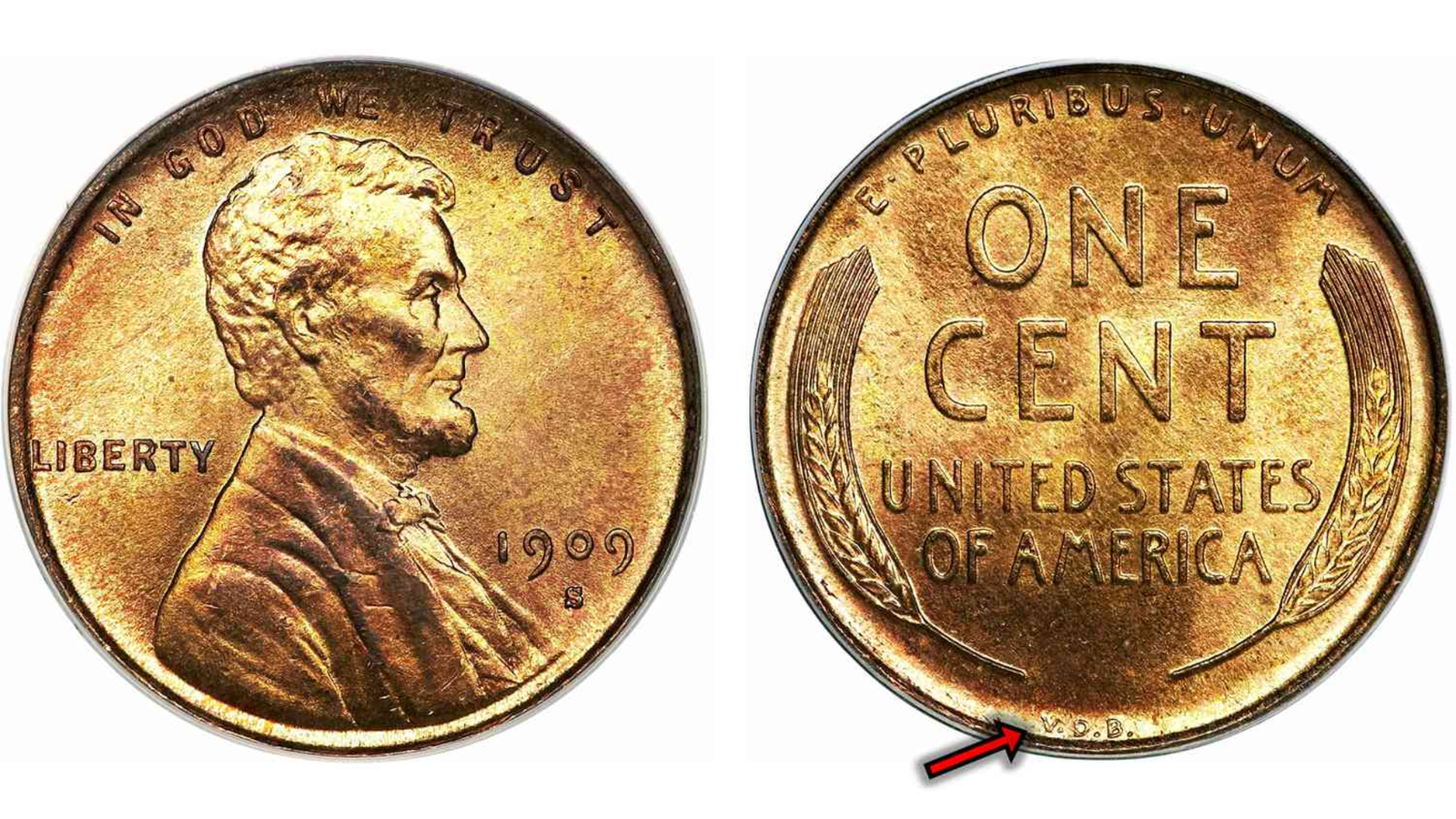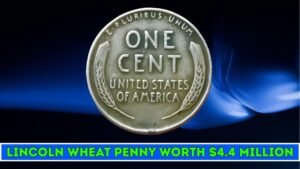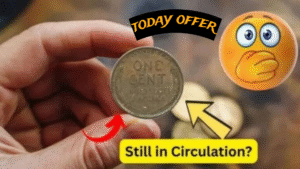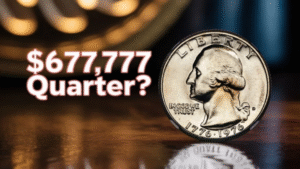Lincoln Wheat Penny: The Lincoln Wheat Penny, also known as the Wheat Cent, first appeared in 1909 to celebrate Abraham Lincoln’s 100th birthday. It was a big deal—the first U.S. coin to show a real president’s face, replacing older designs like the Indian Head penny.
Design and Production Basics
Designed by Victor David Brenner, the front features Lincoln’s profile facing right, with “IN GOD WE TRUST” above, “LIBERTY” to the left, and the year below. A small “D” or “S” under the date marks coins from Denver or San Francisco; no mark means Philadelphia.
The back shows two wheat stalks curving around “ONE CENT” and “UNITED STATES OF AMERICA,” giving it the “Wheat” nickname. Mostly made of 95% copper, the pennies switched to steel in 1943 to save metal for World War II, though a few copper errors slipped out. Over 50 years, billions were minted, circulating through tough times like the Great Depression and wars. Today, they’re common in jars or loose change, but rare ones can be worth thousands.
Why Some Wheat Pennies Are Worth Thousands
Most Wheat Pennies are worth just a cent, but some climb to $144,000 or more due to rarity, condition, or minting mistakes. Grading services like PCGS or NGC score coins from 1 (worn) to 70 (perfect), and top grades drive big prices.
Key Factors Boosting Value
Here’s what makes a penny valuable:
- Scarce Years: Dates with low production, like 1914-D, are hard to find.
- Mint Errors: Mistakes like doubled letters or wrong metals create unique coins.
- Condition and Shine: Bright, red-toned (RD) coins beat faded, brown (BN) ones.
- Collector Demand: Historical value and auction trends push prices higher.
These factors turn pocket change into a collector’s dream.
The $144,000 Star: The 1914-D Wheat Penny
The 1914-D Lincoln Wheat Penny is a standout, reaching $144,000 at auction. Minted in Denver during a low-production year, only 1.19 million were made—far fewer than Philadelphia’s millions. An MS-66 RD example, with bright copper shine and crisp wheat details, wowed bidders. Its rarity and excellent condition make it a prime target, and similar coins may still hide in old collections or change.
Other Rare Wheat Pennies to Look For
Beyond the 1914-D, several varieties spark collector excitement. Keep these on your radar:
Top Varieties with High Value
- 1909-S VDB: Brenner’s initials caused a fuss, pulled early; top grades hit $168,000.
- 1922 No D: Missing mint mark from a worn die; up to $40,000.
- 1931-S: Low mintage of 866,000; MS-66 RD sold for $48,000.
- 1943 Bronze Error: Copper instead of steel; one fetched $1.7 million.
- 1955 Doubled Die: Blurry lettering error; MS-65 RD at $114,000.
These coins blend history and scarcity, making them hot for hunters.
Value Chart: Top Wheat Pennies at Auction
This table lists key varieties with recent high-grade sale ranges (based on auctions from 2018-2025). Prices vary, so get expert appraisals.
| Variety | Special Trait | Mint Mark | High-Grade Value Range | Recent Auction Year |
|---|---|---|---|---|
| 1909-S VDB | Initials controversy | S | $50,000 – $168,000 | 2022 |
| 1914-D | Low production year | D | $75,000 – $158,000 | 2018 |
| 1922 No D | Missing mint mark error | None | $10,000 – $40,000 | 2023 |
| 1931-S | Scarce Depression-era mint | S | $5,000 – $48,000 | 2024 |
| 1943 Bronze | Wartime copper error | Varies | $200,000 – $1.7M | 2010 |
| 1955 Doubled Die | Visible doubling on front | None | $50,000 – $114,000 | 2018 |
This chart shows why details like mint marks and errors matter.
How to Spot Valuable Wheat Pennies in Your Change
With billions minted, Wheat Pennies still pop up in everyday change—bank rolls, old jars, or vending machines. Here’s how to hunt:
- Check Dates: Focus on 1909-1919, 1922, 1931, 1943, 1955.
- Look for Mint Marks: “S” or “D” with rare dates boosts value.
- Spot Errors: Find doubled text, missing marks, or bronze in 1943.
- Assess Condition: Bright, sharp details signal higher worth.
- Weigh It: Copper pennies hit 3.1 grams; 1943 steel ones are 2.7 grams.
Grab penny rolls from banks (50 cents for 50) or check estate sales. Apps like CoinSnap help with quick scans, but pros confirm big finds.
Tips for New Collectors and Sellers
New to coin hunting? Follow these steps:
- Handle Gently: Use gloves to avoid smudges; store in acid-free holders.
- Don’t Clean: Polishing ruins natural shine and value.
- Get Graded: PCGS or NGC grading lifts sales by 20-50%.
- Sell Smart: Coin shops for quick cash; eBay for commons; auctions like Heritage for rarities.
- Join Communities: Reddit’s r/coins or CoinTalk share tips and spot fakes.
Patience makes the hunt fun, even without a big score.
Conclusion: Your Penny Could Be a Jackpot
The $144,000 1914-D Lincoln Wheat Penny, along with other rare finds, proves history hides in your change. From wartime errors to low-mint gems, these coins carry America’s story and potential wealth. Next time you scoop up loose change, take a closer look—a $144,000 treasure might be waiting. Grab a magnifier and start your hunt today!
FAQ: Lincoln Wheat Penny Hunt Basics
Why is the 1914-D penny worth $144,000?
Its low mintage (1.19 million) and top condition (MS-66 RD) with bright copper shine drive its high auction value.
Are Wheat Pennies still in circulation?
Yes! Billions exist, so check bank rolls, old jars, or family stashes for rare dates.
How to spot a 1943 bronze error?
It’s copper-colored, weighs 3.1 grams (not 2.7 like steel), and won’t stick to magnets.
What’s the priciest Wheat Penny sold?
A 1943 bronze error hit $1.7 million in 2010—a rare wartime mistake.
Where to sell a valuable penny?
Local shops for fast sales; Heritage or Stack’s Bowers for top auction prices.




